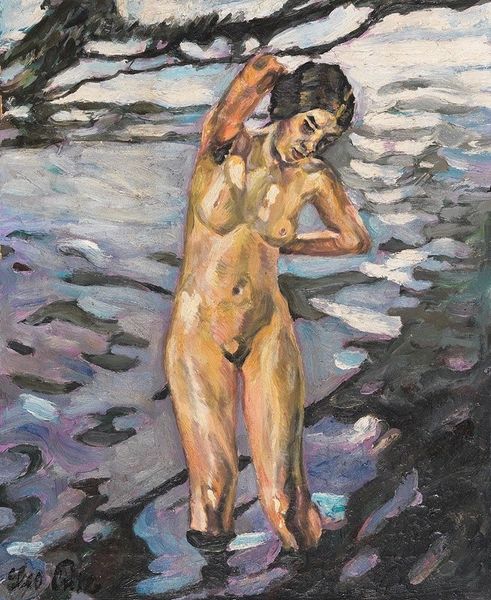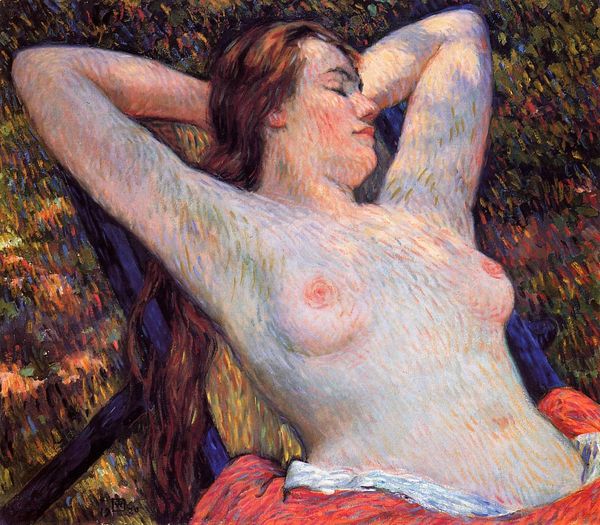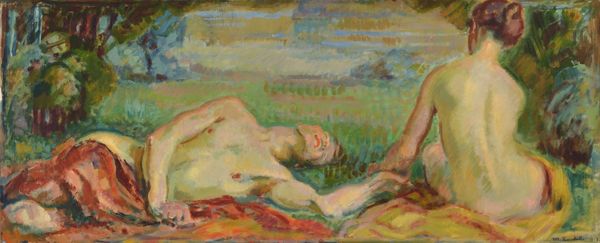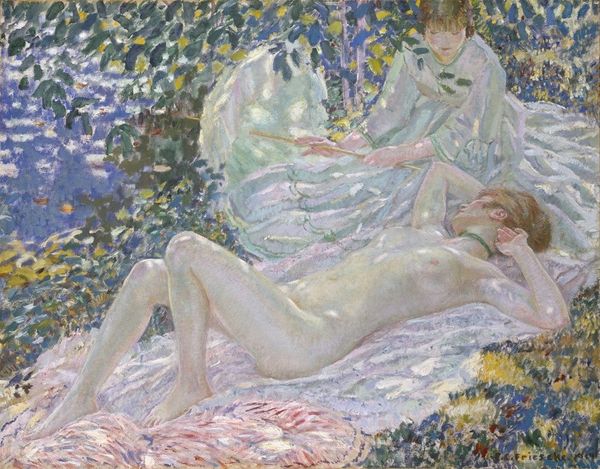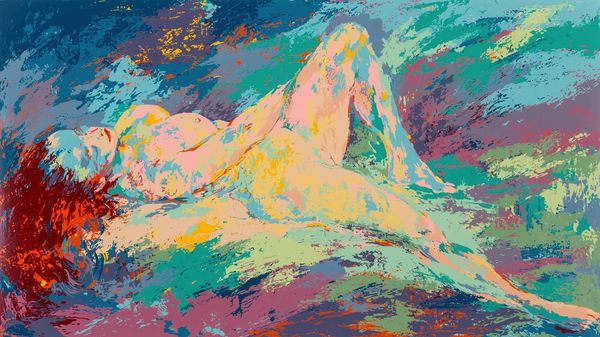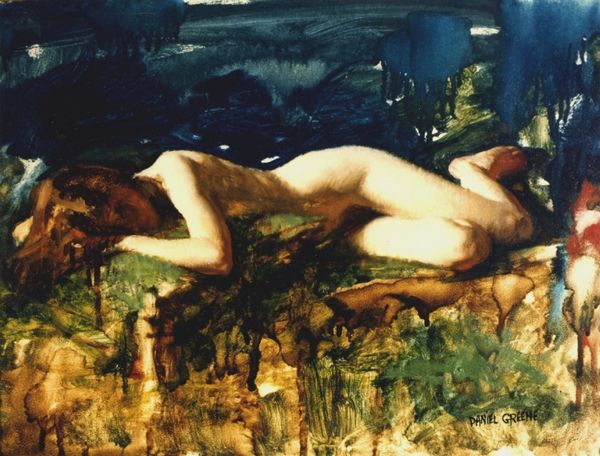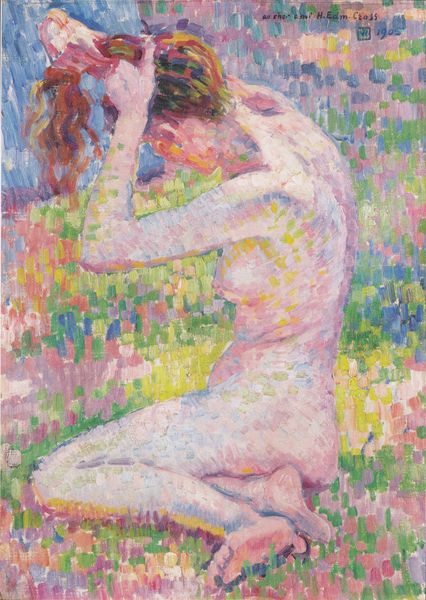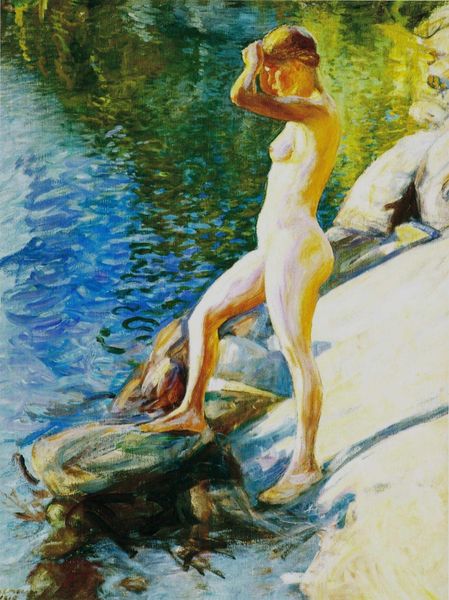
Dimensions: 97 x 130 cm
Copyright: Public domain
Curator: Frederick Carl Frieseke painted "Nude in Dappled Sunlight" around 1915, a delightful example of American Impressionism during the early 20th century. Editor: My first impression is just how intensely fragmented the light is. The dappled effect really breaks down form in a way that almost verges on abstraction. It’s incredibly vibrant. Curator: Frieseke was part of the American expatriate art scene in France, centered in Giverny, of course, with Monet. His work showcases how American artists reinterpreted Impressionist principles. Think about how images of women evolved over the turn of the century; the Impressionists really helped popularize those sorts of modern themes of leisure. Editor: Absolutely. I notice especially how the artist renders the human form itself secondary to the play of light, shadow and texture. The skin, blanket and foliage merge into this shimmering surface. It calls so much attention to materiality; the painting has a beautiful impasto texture to it as well, as if to emphasize the pure experience of sight. Curator: And it’s easy to forget that the cultural perception of nudity at that time was markedly different than today. Consider the ways gender and morality are shaped and expressed through paintings like these, in an era grappling with modern social changes. What could this semi-erotic aesthetic represent for a modern female audience at the time? Editor: Well, perhaps the fragmentation itself offers a kind of liberation, aesthetically speaking. There is almost a flattening effect, liberating us from typical notions of perspective and fixed representation in favor of a world defined by pure sensory experience. Curator: Looking closely, it’s difficult to ignore how the art world—dominated by the French and white male gaze—influenced subject matter, like that female nude. This painting represents a chapter in a very complex art history, marked with the politics of class, race, and gender. Editor: Despite some complicated history, what I see in terms of pure visual delight cannot be denied. It offers such an optimistic investigation of painting’s formal capacity, don't you think? Curator: It certainly reveals to us how the period saw and interpreted leisure and pleasure, a key part of understanding this work’s importance today.
Comments
No comments
Be the first to comment and join the conversation on the ultimate creative platform.
